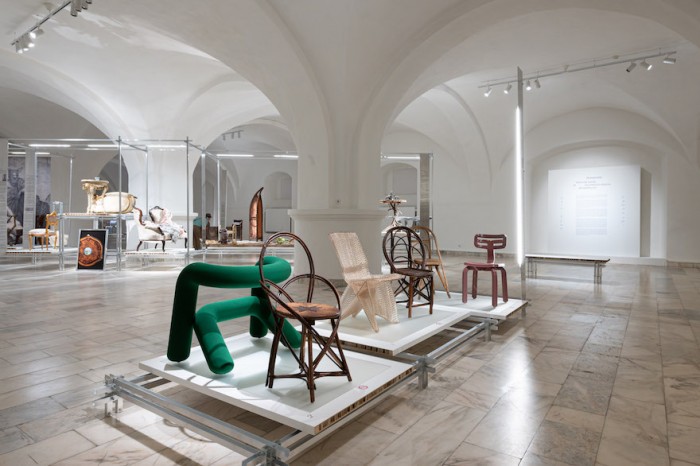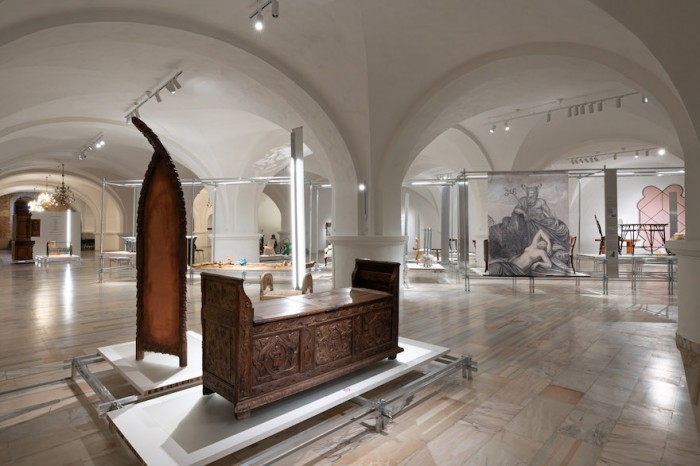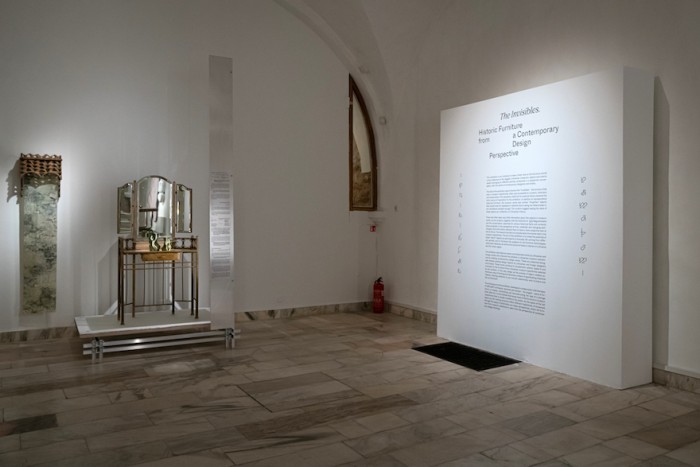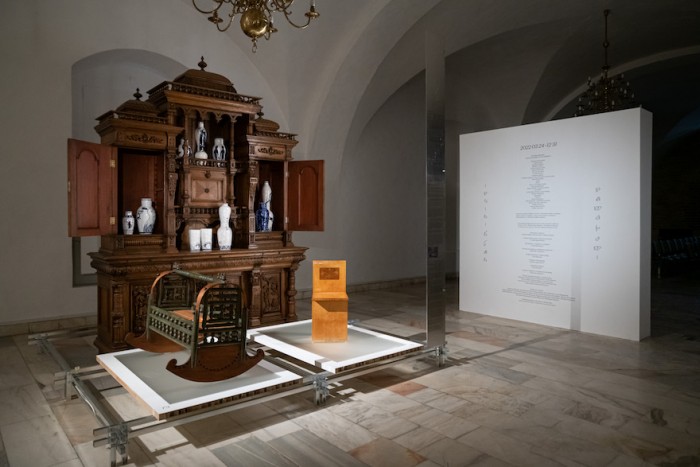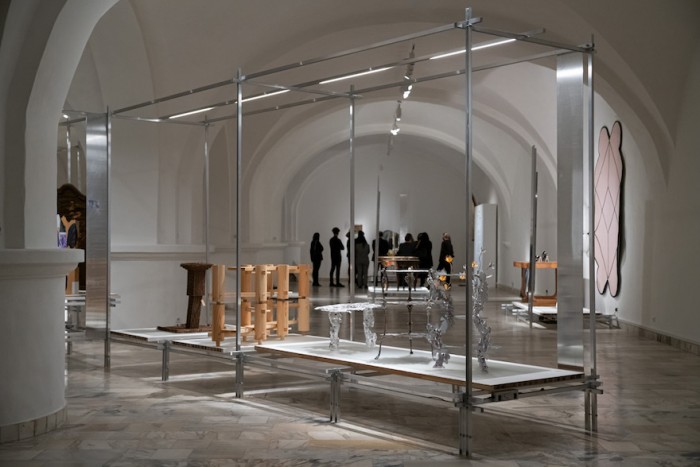Unearthing the forgotten is the theme of a recently opened exhibition at the Museum of Applied Arts and Design in Vilnius, Lithuania. Curated by Vytautas Gečas, Monika Lipšic and Marija Puipaitė, ‘The Invisibles. Historic Furniture from a Contemporary Design Perspective’ will run until 31 December.
Attending the exhibition will answer many of the questions you may have had about what resides within a museum repository, such as the Lithuanian National Museum of Art, Šiauliai “Aušros” Museum, the National Museum of Lithuania and the M.K. Čiurlionis National Museum of Art. Instead of allowing these chairs, desks and objets d’art to become dusty and obsolete, each has been placed on a literal pedestal to serve as golden nuggets of age-old inspiration.
With a view to reflecting on the history of Lithuania, historian Dr Eglė Bagušinskaitė and his team gathered what detail they could to allow them to see each item with a subjective eye. In this way, these “silent” chattels were restored to a place of everyday use, just as their audience was educated on their methods of construction and repair, the country’s culture and the region’s ancient interiors.
A fascinating and unexpected twist to this display is that it features design objects by multiple Lithuanian and foreign designers and brands, interspersed with the historical effects mentioned above – and these works continue to complement, extend, speak to and comment on the ones from past generations that sit among them. This renders the exhibition multivocal, revealing a continuity of ideas and connections between the things we used back then; and the ones we choose to decorate our spaces with today.
Another brainwave is the architecture of the exhibition, developed by the curators in tandem with IMPLMNT architects. In the same way that a home holds our furniture within, so the storage shelves of three museum repositories were holding safe these gracious items, invisible to the public – until the creative team behind ‘The Invisibles’opened up the space for all to see, appreciate and move through.
And just as children believe their toys come to life when the lights go off, perhaps these objects and interior details do just the same – moving across time, space and form in fresh ways beyond even what this two-toned exhibition has attempted to portray.
Read more:
The multipotentialite side of life.
The exhibit that turns audience into art.
Art across time.
Credits: Gintarė Grigėnaitė

